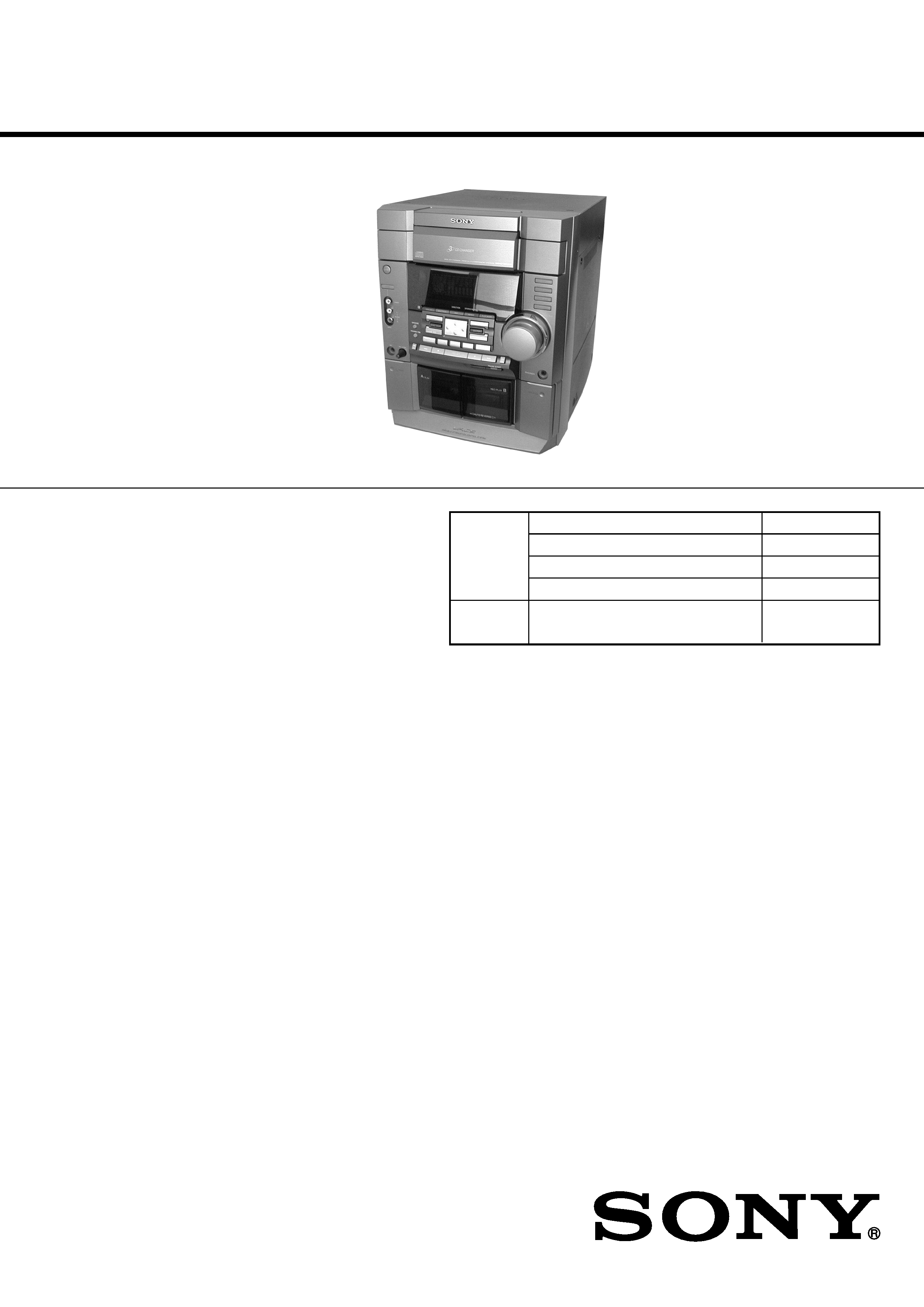
HCD-DX20/RG30
AEP Model
UK Model
HCD-RG30
E Model
HCD-DX20
SERVICE MANUAL
MINI HIFI COMPONENT SYSTEM
Ver 1.0 2001.06
Sony Corporation
Home Audio Company
Shinagawa Tec Service Manual Production Group
9-873-858-11
2001F0200-1
© 2001.6
· HCD-DX20/RG30 is the tuner,
deck, CD and amplifier section in
MHC-DX20/RG30.
Model Name Using Similar Mechanism
HCD-DX30/RG40
CD
CD Mechanism Type
CDM58B-K6BD38
Section
Base Unit Name
BU-K6BD38
Optical Pick-up Name
KSM-213DCP
Tape deck
Model Name Using Similar Mechanism
NEW
Section
-- Continued on next page --
SPECIFICATIONS
Photo: HCD-DX20
SPEAKER:
accepts impedance of 6 to 16 ohms
CD player section
System
Compact disc and digital audio system
Laser
Semiconductor laser (
=780 nm)
Emission duration: continuous
Laser output
Max. 44.6
µW*
* This output is the value measured at a distance
of 200 mm from the objective lens surface on
the Optical Pick-up Block with 7 mm aper-
ture.
Frequency response
2 Hz 20 kHz (
±0.5 dB)
Wavelength
780 790 nm
Signal-to-noise ratio
More than 90 dB
Dynamic range
More than 90 dB
CD OPTICAL DIGITAL OUT
(Square optical connector jack, rear panel)
Wavelength
660 nm
Output Level
18 dBm
Amplifier section
European models:
HCD-RG30:
DIN power output (rated) 50 + 50 watts (6 ohms at 1 kHz, DIN)
Continuous RMS power output (reference)
60 + 60 watts (6 ohms at 1 kHz, 10% THD)
Music power output (reference)
115 + 115 watts (6 ohms at 1 kHz, 10% THD)
Other models:
HCD-DX20:
The following measured at AC 120, 220, 240 V 50/60 Hz
DIN power output (rated) 50 + 50 watts (6 ohms at 1 kHz, DIN)
Continuous RMS power output (reference)
60 + 60 watts (6 ohms at 1 kHz, 10% THD)
Inputs
MD/VIDEO (AUDIO) IN (phono jacks):
voltage 450/250 mV, impedance 47 kilohms
GAME (AUDIO) IN (phono jacks):
voltage 450 mV, impedance 47 kilohms
MIC (mini jack):
sensitivity 1 mV, impedance 10 kilohms
Outputs
PHONES (stereo mini jack):
accepts headphones of 8 ohms or more
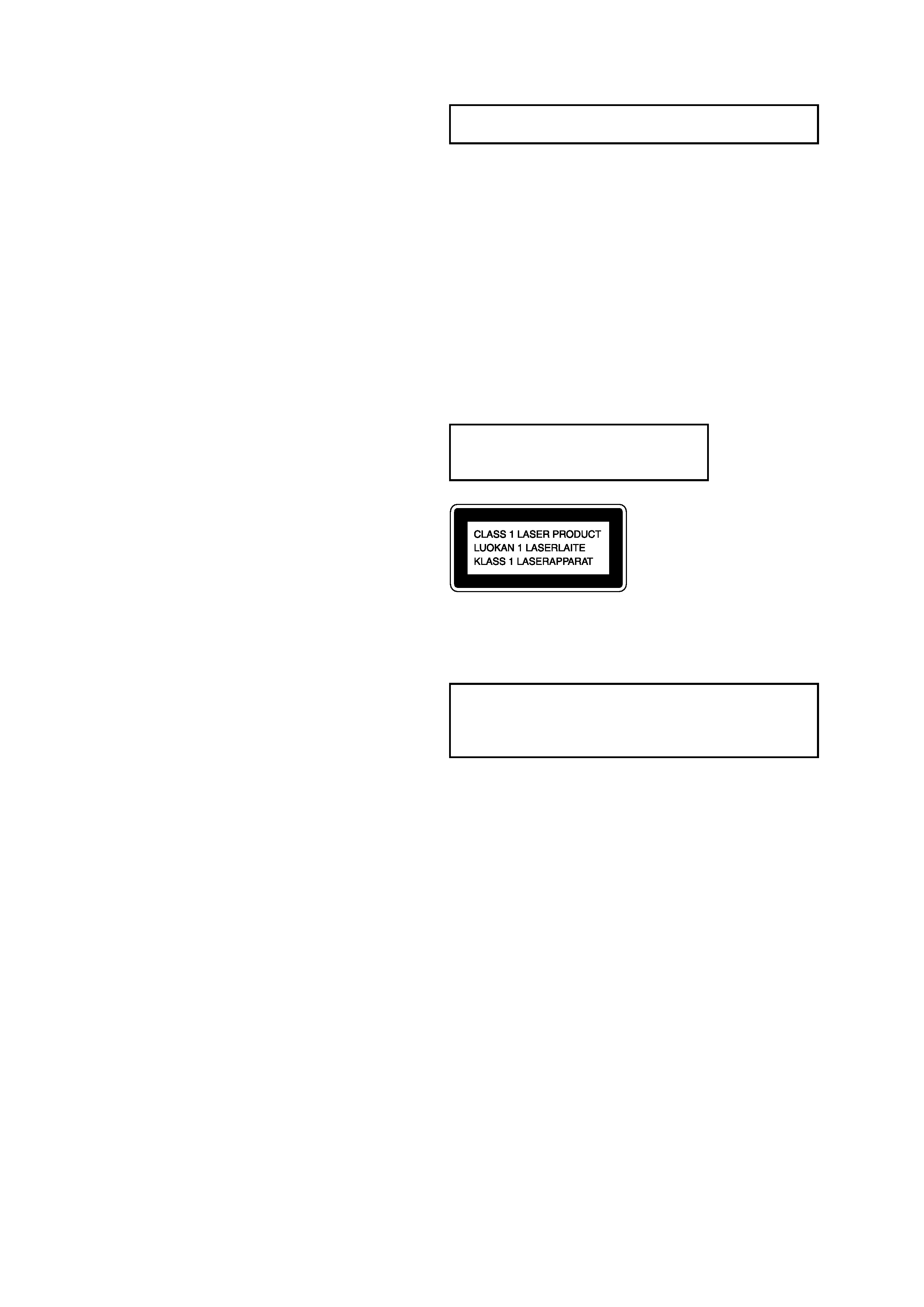
2
HCD-DX20/RG30
Tape deck section
Recording system
4-track 2-channel stereo
Frequency response
40 13,000 Hz (
±3 dB), using Sony TYPE I
cassette
Tuner section
FM stereo, FM/AM superheterodyne tuner
FM tuner section
Tuning range
87.5 108.0 MHz
Antenna
FM lead antenna
Antenna terminals
75 ohm unbalanced
Intermediate frequency
10.7 MHz
AM tuner section
Tuning range
European and Middle Eastern models:
531 1,602 kHz (with the interval set at 9 kHz)
Other models:
531 1,602 kHz (with the interval set at 9 kHz)
530 1,710 kHz (with the interval set at 10 kHz)
Antenna
AM loop antenna
Antenna terminals
External antenna terminal
Intermediate frequency
450 kHz
General
Power requirements
European models:
230 V AC, 50/60 Hz
Mexican models:
120 V AC, 50/60 Hz
Other models:
120 V, 220 V or 230 240 V AC, 50/60 Hz
Adjustable with voltage selector
Power consumption
European models:
110 watts
0.5 watts (at the Power Saving Mode)
Other models:
110 watts
Dimensions (w/h/d)
Approx. 280 x 325 x 421 mm
Mass
European models:
Approx. 8.5 kg
Other models:
Approx. 8.5 kg
Supplied accessories:
AM loop antenna (1)
Remote Commander (1)
Batteries (2)
FM lead antenna (1)
Front speaker pads (8)
Design and specifications are subject to change without notice.
This appliance is classified as a CLASS 1 LASER product. The
CLASS 1 LASER PRODUCT MARKING is located on the rear
exterior.
Laser component in this product is capable
of emitting radiation exceeding the limit for
Class 1.
CAUTION
Use of controls or adjustments or performance of procedures
other than those specified herein may result in hazardous radia-
tion exposure.
Notes on chip component replacement
· Never reuse a disconnected chip component.
· Notice that the minus side of a tantalum capacitor may be
damaged by heat.
Flexible Circuit Board Repairing
· Keep the temperature of soldering iron around 270°C
during repairing.
· Do not touch the soldering iron on the same conductor of the
circuit board (within 3 times).
· Be careful not to apply force on the conductor when soldering
or unsoldering.
NOTES ON HANDLING THE OPTICAL PICK-UP
BLOCK OR BASE UNIT
The laser diode in the optical pick-up block may suffer electrostatic
break-down because of the potential difference generated by the
charged electrostatic load, etc. on clothing and the human body.
During repair, pay attention to electrostatic break-down and also
use the procedure in the printed matter which is included in the
repair parts.
The flexible board is easily damaged and should be handled with
care.
NOTES ON LASER DIODE EMISSION CHECK
The laser beam on this model is concentrated so as to be focused on
the disc reflective surface by the objective lens in the optical pick-
up block. Therefore, when checking the laser diode emission, ob-
serve from more than 30 cm away from the objective lens.
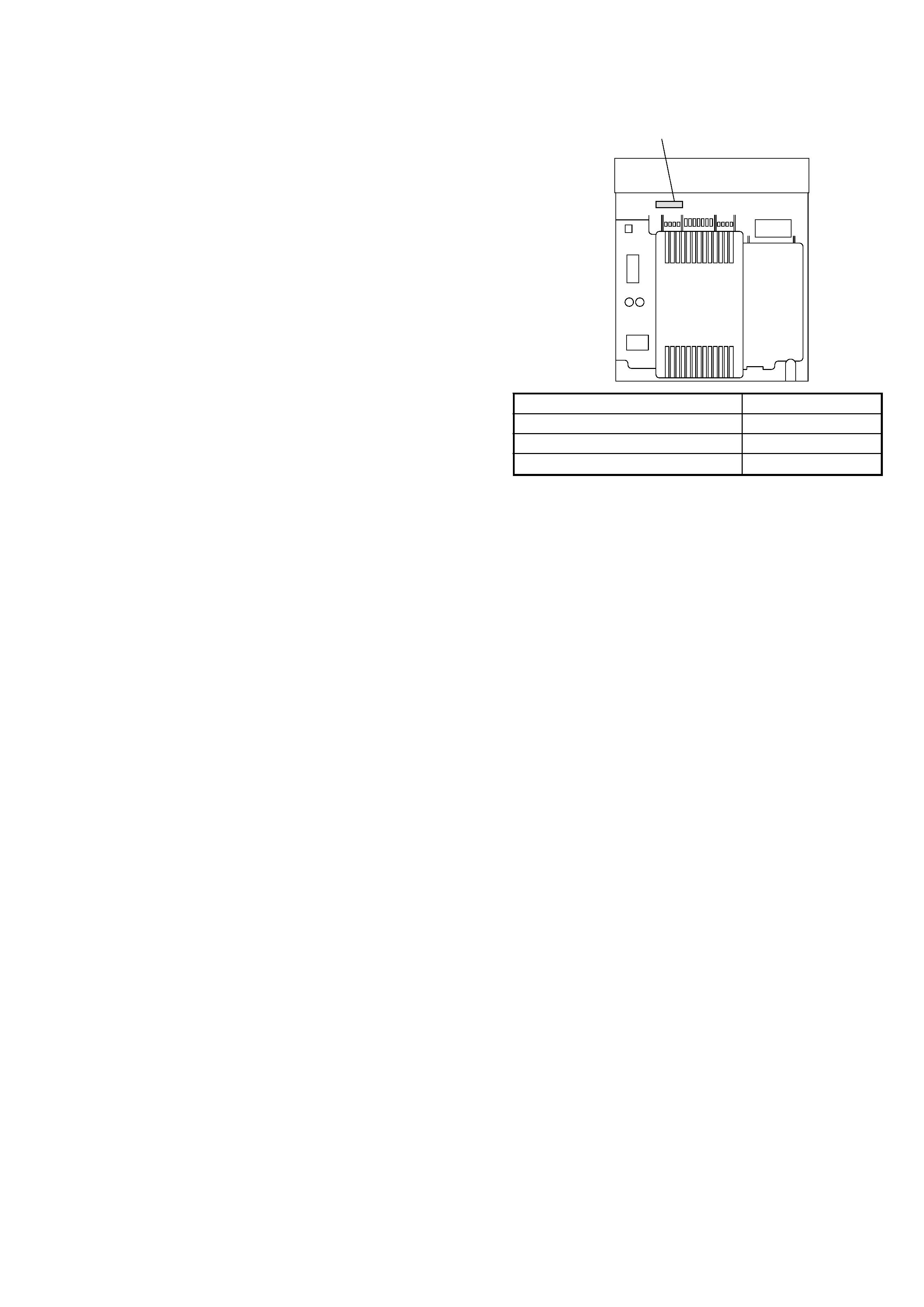
3
HCD-DX20/RG30
TABLE OF CONTENTS
MODEL IDENTIFICATION
-- BACK PANEL --
MODEL
RG30
DX20: E2, E51, EA, SP, AR models
DX20: KR, MX, TH models
PARTS No.
4-234-032-2s
4-234-091-0s
4-234-091-6s
· Abbreviation
EA
: Saudi Arabia model
SP
: Singapore model
TH
: Thai model
KR
: Korea model
MX
: Mexican model
AR
: Argentina model
E51
: Chiri and Peru model
E2
: Central and South America model
PARTS No.
1. SERVICE NOTE .............................................................. 4
2. GENERAL ......................................................................... 5
3. DISASSEMBY ................................................................. 7
4. TEST MODE ................................................................... 13
5. ELECTRICAL ADJUSTMENTS .............................. 17
6. DIAGRAMS
6-1.
Circuit Board Location ..................................................... 19
6-2.
Block Diagrams Tuner Section ................................... 20
Block Diagrams Main Section .................................... 21
6-3.
Printed Wiring Board BD Section ............................... 22
6-4.
Schematic Diagram BD Section .................................. 23
6-5.
Printed Wiring Board Main Section ............................ 24
6-6.
Schematic Diagram Main Section (1/5) ..................... 25
6-7.
Schematic Diagram Main Section (2/5) ..................... 26
6-8.
Schematic Diagram Main Section (3/5) ..................... 27
6-9.
Schematic Diagram Main Section (4/5) ..................... 28
6-10. Schematic Diagram Main Section (5/5) ..................... 29
6-11. Printed Wiring Board Power AMP Section ................. 30
6-12. Schematic Diagram Power AMP Section ..................... 31
6-13. Printed Wiring Board Panel Section ............................ 32
6-14. Schematic Diagram Panel Section ............................... 33
6-15. Printed Wiring Board Trans Section ............................ 34
6-16. Schematic Diagram Trans Section ............................... 35
6-17. Printed Wiring Board Driver Section ........................... 36
6-18. Schematic Diagram Driver Section .............................. 36
6-19. IC Pin Function Description ............................................. 37
6-20. IC Block Diagrams ............................................................ 40
7. EXPLODED VIEWS
7-1.
Main Section ..................................................................... 43
7-2.
Front Panel Section .......................................................... 44
7-3.
Chassis Section ................................................................. 45
7-4.
CD Mechanism Deck Section .......................................... 46
8. ELECTRICAL PARTS LIST ...................................... 47
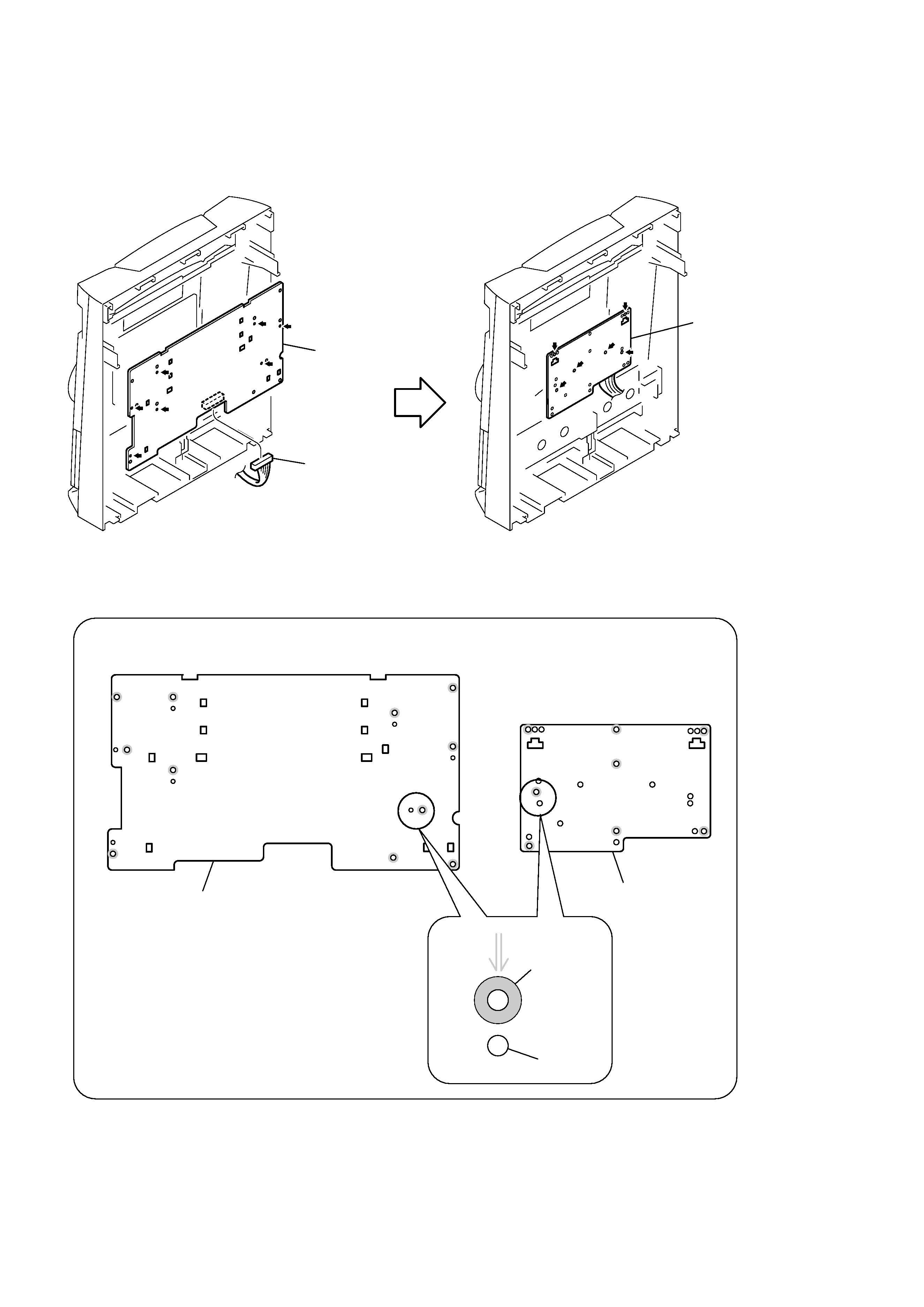
4
HCD-DX20/RG30
SECTION 1
SERVICE NOTE
1
Connector
13p (CN712)
2
Cut the seven melted-connection points
with a cutting plier.
4
Cut the six melted-connection points
with a cutting plier.
3
Panel board
5
Key board
Panel board
(ten screw holes)
Key board
(eight screw holes)
Screw hole
In order to re-install the panel board and the key board,
fix them by using the screws (+BVTP 2.6
× 8 ) respectively.
Screw in to the respective screw holes.
Do not tighten the screws excessively.
* The panel board and the key board only are connected to the front panel
by means of hot-melting the plastics.
Note for installing the panel board and the key board
REMOVING THE PANEL BOARD AND THE KEY BOARD
Hot melt
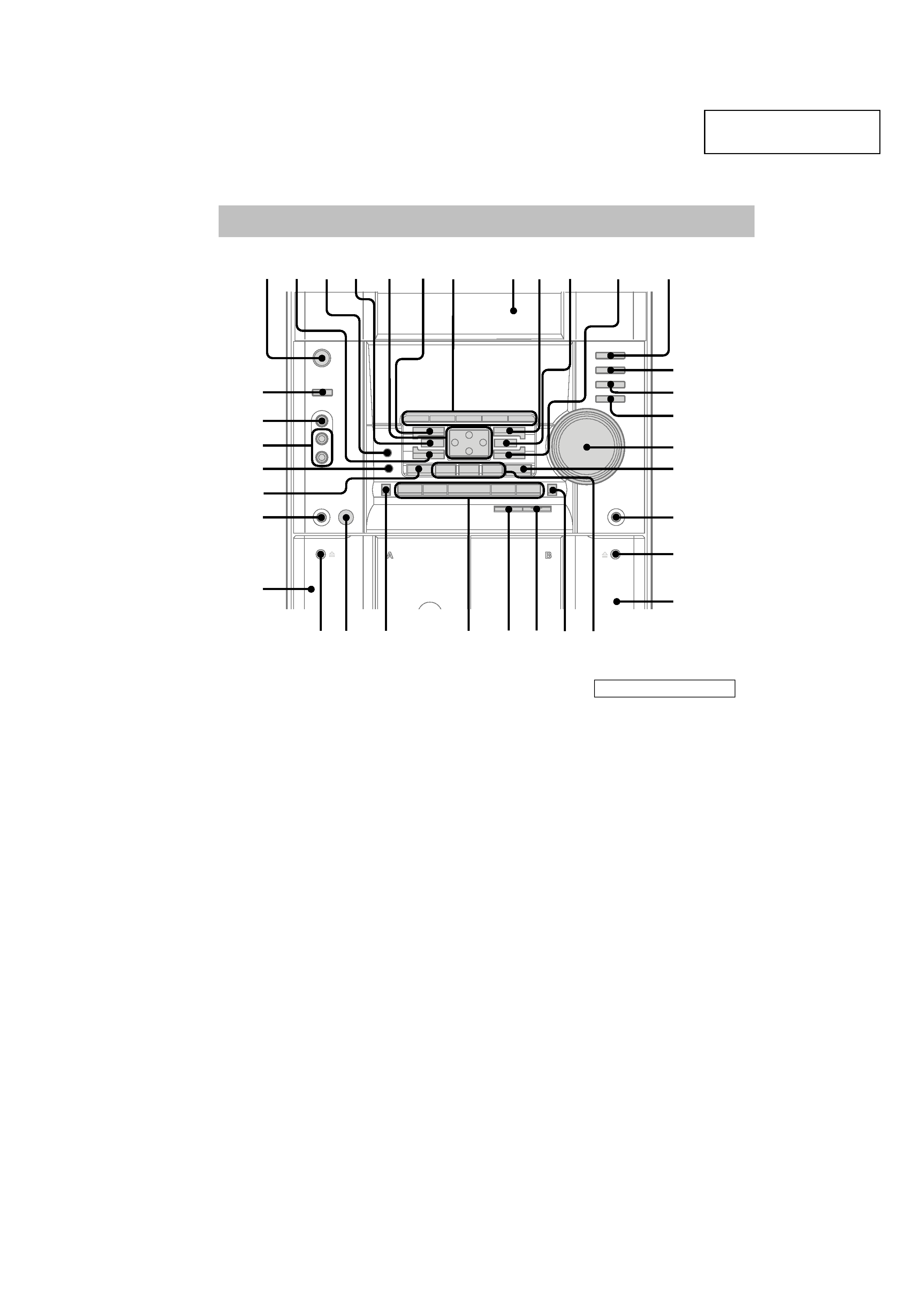
5
HCD-DX20/RG30
This section is extracted
from instruction manual.
SECTION 2
GENERAL
Main unit
ql
w;
qj
qh
qk
qg
qd
qf
wa
ws
wd
wf
wg
wh
wj
wk
eg
ef
ed
es
e;
wl
12 3 4
6
58 9 q;
qa
qs
7
ea
AUDIO jacks ed
CD qs
CD SYNC wf
Deck A wl
Deck B w;
DIRECTION*1 7
DISC 1 3 wa
DISC SKIP EX-CHANGE ea
Disc tray 8
DISPLAY 7
EDIT 7
EFFECT ON/OFF 4
ENTER 0
GAME eg
GAME EQ 2
GROOVE 3
KARAOKE PON*2 es
MD (VIDEO) qg
MIC jack*2 e;
MIC LEVEL control*2 wj
MOVIE EQ 9
MUSIC EQ 6
P FILE qa
PHONES jack qk
PLAY MODE 7
PTY/DIRECTION 7
REC PAUSE/START wd
REPEAT 7
SPECTRUM 7
STEREO/MONO 7
TAPE A/B qf
TUNER MEMORY 7
TUNER/BAND qd
VIDEO jack ef
VOLUME control qh
BUTTON DESCRIPTIONS
v/V/b/B 5
Z (deck A) wk
Z (deck B) ql
M (fast forward) ws
. (go back) wg
Z OPEN/CLOSE qj
?/1 (power) 1
x (stop) wg
nN (play) wg
X (pause) wg
> (go forward) wg
m (rewind) wh
*1 PTY/DIRECTION for
European model
*2 HCD-DX30 only
